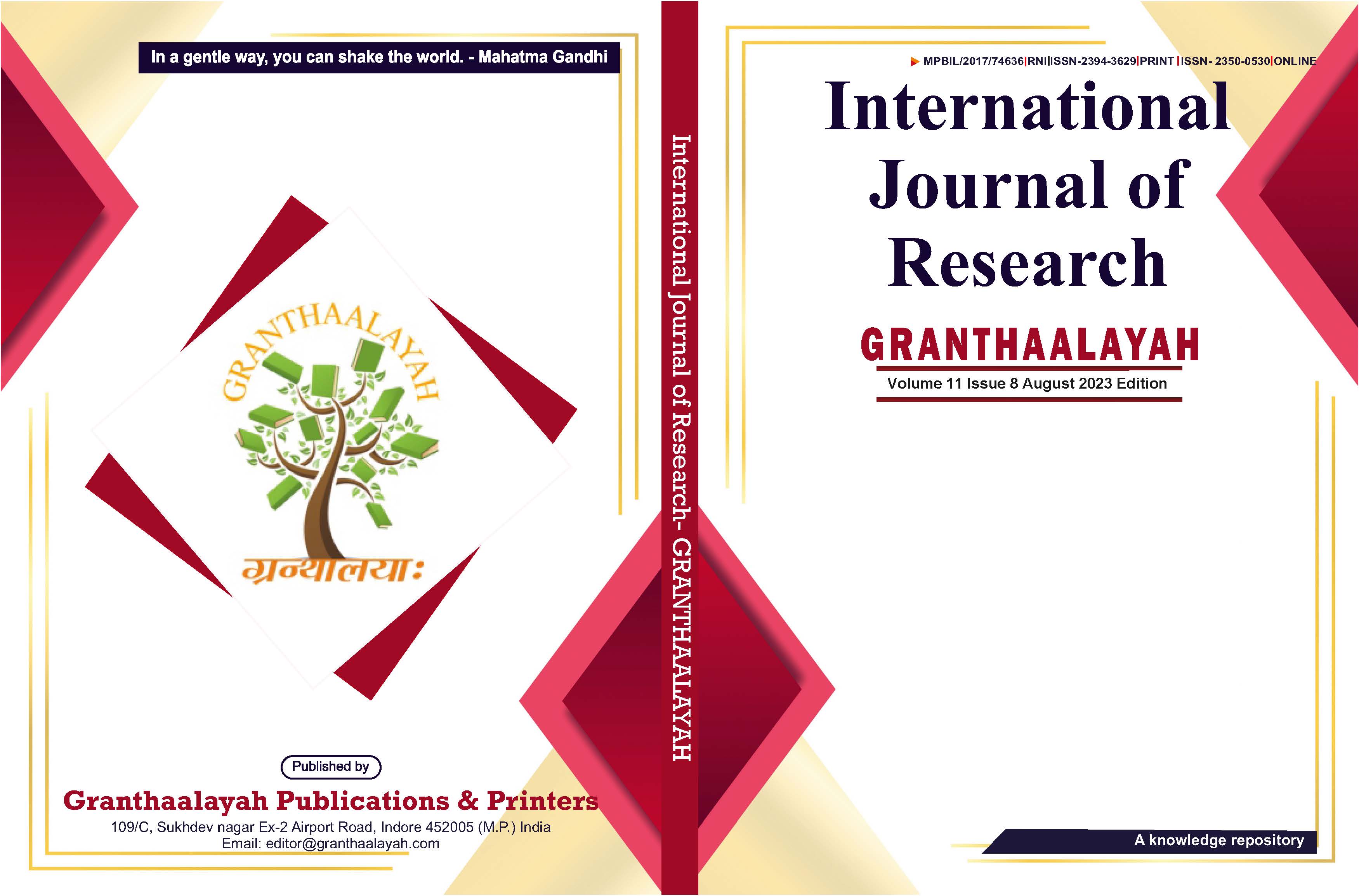HISTORICAL INSIGHTS ON SRIMANTA SANKARDEVA AND THE NEO-VAISHNAVISM MOVEMENT: SOCIO-POLITICAL AND CULTURAL TRANSFORMATIONS IN MEDIEVAL ASSAM
DOI:
https://doi.org/10.29121/granthaalayah.v11.i8.2023.6422Keywords:
Srimanta Sankardeva, Neo Vaishnavism, Eka-Sarana Nama Dharma, Satra, Namghar, Medieval Assam, Socio-Cultural TransformationAbstract [English]
The Neo-Vaishnavism (Eka-Sarana Nama Dharma) movement, which was founded by Srimanta Sankardeva (1449–1568 C.E.), is credited with changing the religious, social, and cultural paths of medieval Assam. Through inclusive institutions like Namghars, Sattras, and Bhaona performances, Sankardeva's reformist mission aimed to integrate disparate ethnic communities and spread devotion (bhakti) based on a single, accessible divine principle in the face of caste stratification, communal tensions, and fragmented politics.1 His movement left lasting effects on identity formation and intercommunal cohesion over the ensuing decades, influencing the Assamese language, arts, social conventions, and political affiliations.
The research conducts a critical historical analysis of the Neo-Vaishnavite movement in Assam, examining its dual roles as a socio-cultural revolution and a religious reform. In addition to examining how his disciples institutionalized his vision, it places Sankardeva's activities within the political framework of Ahom, Koch, and Baro-Bhuyan power dynamics and evaluates the resulting changes in caste attitudes, gender norms, ritual practices, and literary culture. The study unearths the continuities and disturbances his movement created by combining original chronicles (like Buranjis), hagiographical sources, and existing scholarship. The study contends that Neo-Vaishnavism was a powerful social engineering tool in medieval Assam rather than just a religious doctrine, and that despite changes, its influence can still be seen in Assamese society today.
Downloads
References
Barua, A. (1999), Socio-Cultural History of Assam, Spectrum Publications, 187-191.
Barua, A. R. (2010), "Patriarchy and Religion: Gender Roles in Medieval Assam," Assam Historical Review, 14, 112-115.
Barua, A. R. (2012), Cultural Heritage of Assam: Neo-Vaishnavism and the Arts, Assam University Press, 210-215.
Das, D. & Saikia, C.R. (2020), "Neo‑Vaishnavism Movement of Srimanta Sankardeva in Assam: Its Socio‑Cultural Imprints", International Journal of Management, Vol. 11 (10), 1396‑1398.
Dutta, A. (2017), "Role of the State and Traditional Institutions in Identity Formation: A Study of the Namghar in Assam," Journal of North East India Studies, 7 (2), 46‑56.
Dutta, B.R. (2015), "Social Ethics in the Neo-Vaishnavite Movement: Gender and Family," Journal of Assam Studies, 9 (2), 87-89.
Dutta, B.R. (2018), "Institutional Dynamics and Social Change in Neo-Vaishnavism," Journal of Assam Studies, Vol. 11 (1), 95-98.
Dutta, R.B. (2020), "Neo-Vaishnavism and Modern Assamese Identity," Journal of Assam Studies, 15 (2), 120-124.
Dutta, R.B. (2020), "Structure Technology in the Sattra of Assam, India", International Journal of Psychosocial Rehabilitation, 24(4), 1349‑1351. https://doi.org/10.37200/IJPR/V24I4/PR201107 DOI: https://doi.org/10.37200/IJPR/V24I4/PR201107
Hoque, A. (2020), "Relation Between Mahapurusha Srimanta Sankardeva And Assamese Society: A Brief Study", Journal of Language and Linguistic Studies, 16( 2), 45‑46.
Kalita, B. J. (2016), Srimanta Sankardeva and Neo-Vaishnava Movement in Assam: A Study from Historical Perspective, The International Journal of Humanities & Social Studies, 4 (8), 159-161.
Kalita, B.J. (2016), Srimanta Sankardeva and Neo-Vaishnava Movement in Assam: A Study from Historical Perspective, The International Journal of Humanities & Social Studies, 4(8), 157-159.
Khataniar, D. (2022), Neo-Vaishnavism in Assam and Satra Institutions, Vegueta: Anuario de la Facultad de Geografía e Historia, 22 (1), 398-400.
Neog, M. (1983), Srimanta Sankardeva and Neo-Vaishnavism in Assam, Gauhati University Press, 45-48.
Neog, M. (1983), Srimanta Sankardeva and Neo-Vaishnavism in Assam, 1983, Gauhati University Press, 157-160.
Neog, M. (1983), Srimanta Sankardeva and Neo-Vaishnavism in Assam, Gauhati University Press, 142-145.
Sahapedia, (2021), "Sattras of Assam: Knowledge Traditions, Practices and Rituals Institutions", article by Abismrita Chakravarty, 3‑4
Saikia, A. (1985), Socio-Political History of Assam from the Fifteenth to the Eighteenth Century, Spectrum Publications, 201-203.
Saikia, A. (1985), Socio-Political History of Assam from the Fifteenth to the Eighteenth Century, Spectrum Publications, 216-218.
Sutradhar, K.C. (2022), Role of Maharaja Naranarayana in the Consolidation of the Koch Kingdom: A Historical Study, International Journal of Historical Insight and Research, 45‑48. https://doi.org/10.48001/ijhir.2022.08.02.002 DOI: https://doi.org/10.48001/ijhir.2022.08.02.002
Published
How to Cite
Issue
Section
License
Copyright (c) 2023 Guptajit Pathak, Dr. Projit Kumar Palit

This work is licensed under a Creative Commons Attribution 4.0 International License.
With the licence CC-BY, authors retain the copyright, allowing anyone to download, reuse, re-print, modify, distribute, and/or copy their contribution. The work must be properly attributed to its author.
It is not necessary to ask for further permission from the author or journal board.
This journal provides immediate open access to its content on the principle that making research freely available to the public supports a greater global exchange of knowledge.

























